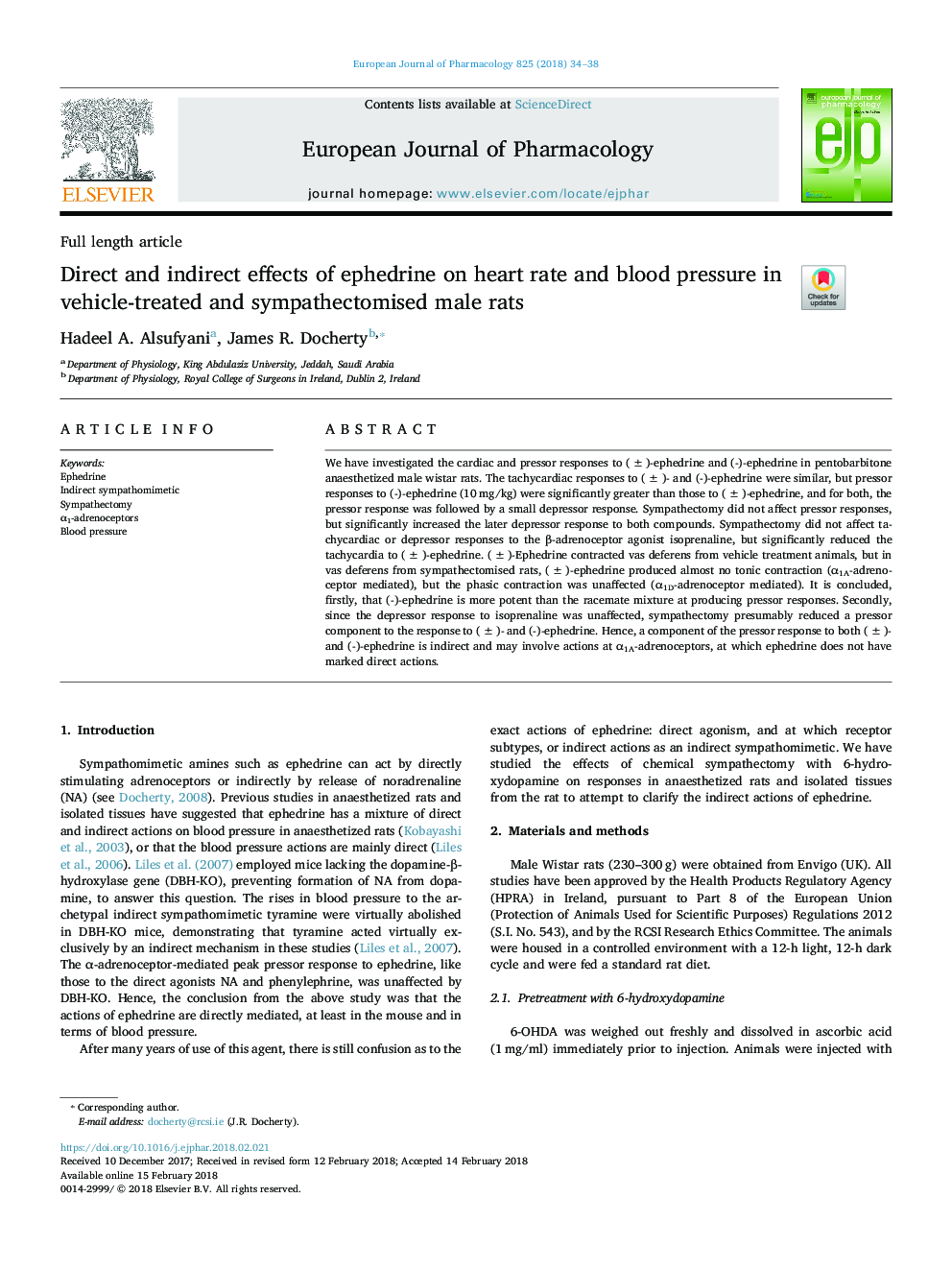| Article ID | Journal | Published Year | Pages | File Type |
|---|---|---|---|---|
| 8529232 | European Journal of Pharmacology | 2018 | 5 Pages |
Abstract
We have investigated the cardiac and pressor responses to (±)-ephedrine and (-)-ephedrine in pentobarbitone anaesthetized male wistar rats. The tachycardiac responses to (±)- and (-)-ephedrine were similar, but pressor responses to (-)-ephedrine (10â¯mg/kg) were significantly greater than those to (±)-ephedrine, and for both, the pressor response was followed by a small depressor response. Sympathectomy did not affect pressor responses, but significantly increased the later depressor response to both compounds. Sympathectomy did not affect tachycardiac or depressor responses to the β-adrenoceptor agonist isoprenaline, but significantly reduced the tachycardia to (±)-ephedrine. (±)-Ephedrine contracted vas deferens from vehicle treatment animals, but in vas deferens from sympathectomised rats, (±)-ephedrine produced almost no tonic contraction (α1A-adrenoceptor mediated), but the phasic contraction was unaffected (α1D-adrenoceptor mediated). It is concluded, firstly, that (-)-ephedrine is more potent than the racemate mixture at producing pressor responses. Secondly, since the depressor response to isoprenaline was unaffected, sympathectomy presumably reduced a pressor component to the response to (±)- and (-)-ephedrine. Hence, a component of the pressor response to both (±)- and (-)-ephedrine is indirect and may involve actions at α1A-adrenoceptors, at which ephedrine does not have marked direct actions.
Related Topics
Life Sciences
Neuroscience
Cellular and Molecular Neuroscience
Authors
Hadeel A. Alsufyani, James R. Docherty,
